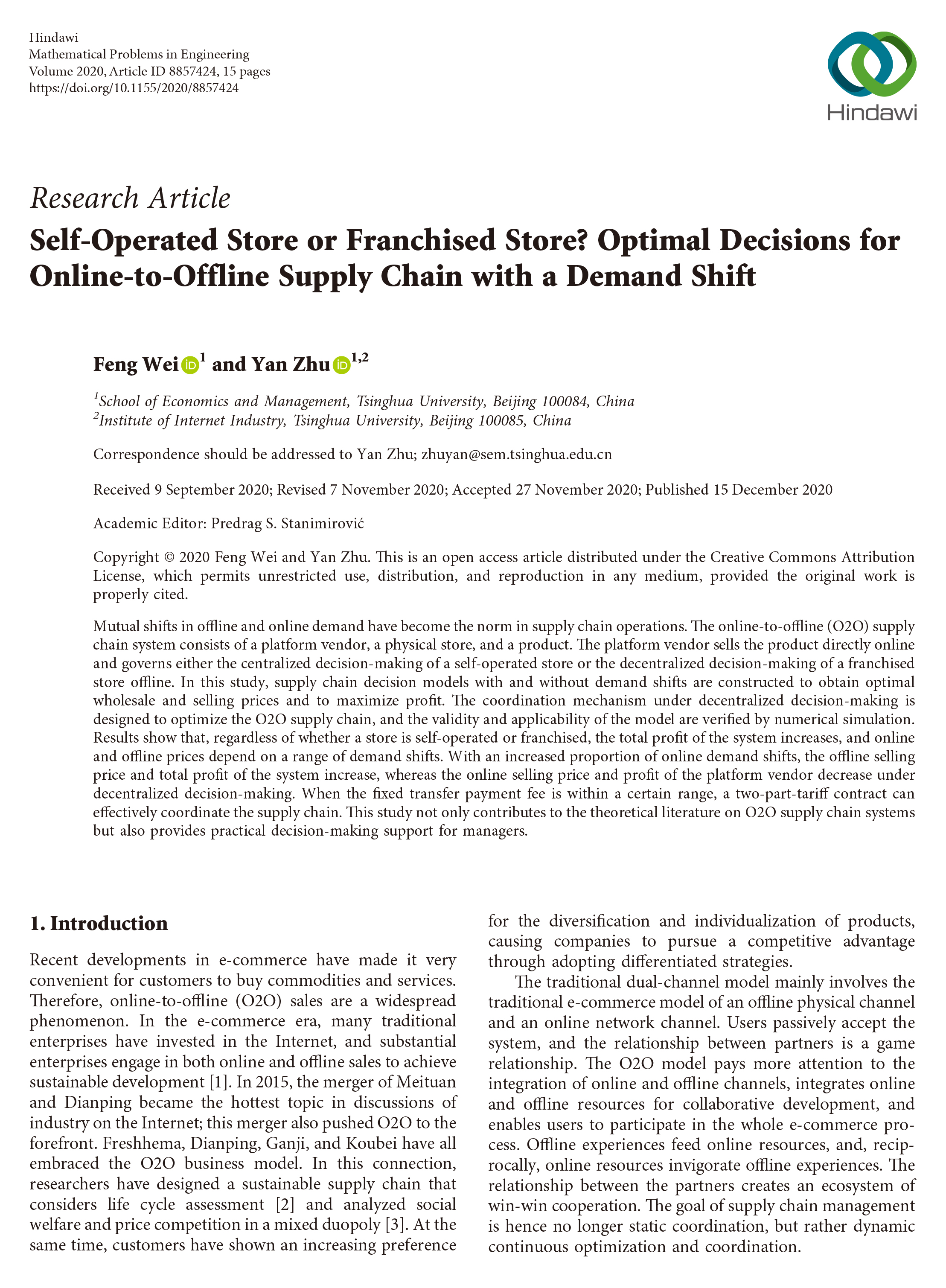清华大学互联网产业研究院博士后魏锋及其导师朱岩教授合作发表论文:Self-Operated Store or Franchised Store? Optimal Decisions for Online-to-Offline Supply Chain with a Demand Shift,该文章于 2020 年 12 月发表于 SCI 收录期刊 Mathematical Problems in Engineering。

Self-Operated Store or Franchised Store? Optimal Decisions for Online-to-Offline Supply Chain with a Demand Shift
Feng Wei1, 2 and Yan Zhu1, 2,*
1 School of Economics and Management, Tsinghua University, Beijing, 100084, China
2 Institute of Internet Industry, Tsinghua University, Beijing 100085, China
Correspondence should be addressed to Yan Zhu; zhuyan@sem.tsinghua.edu.cn
Abstract: Mutual shifts in offline and online demand have become the norm in supply chain operations. The online-to-offline (O2O) supply chain system consists of a platform vendor, a physical store, and a product. The platform vendor sells the product directly online and governs either the centralized decision-making of a self-operated store or the decentralized decision-making of a franchised store offline. In this study, supply chain decision models with and without demand shifts are constructed to obtain optimal wholesale and selling prices and to maximize profit.The coordination mechanism under decentralized decision-making is designed to optimize the O2O supply chain, and the validity and applicability of the model are verified by numerical simulation. Results show that, regardless of whether a store is self-operated or franchised, the total profit of the system increases, and online and offline prices depend on a range of demand shifts. With an increased proportion of online demand shifts, the offline selling price and total profit of the system increase, whereas the online selling price and profit of the platform vendor decrease under decentralized decision-making. When the fixed transfer payment fee is within a certain range, a two-part-tariff contract can effectively coordinate the supply chain. This study not only contributes to the theoretical literature on O2O supply chain systems but also provides practical decision-making support for managers.
